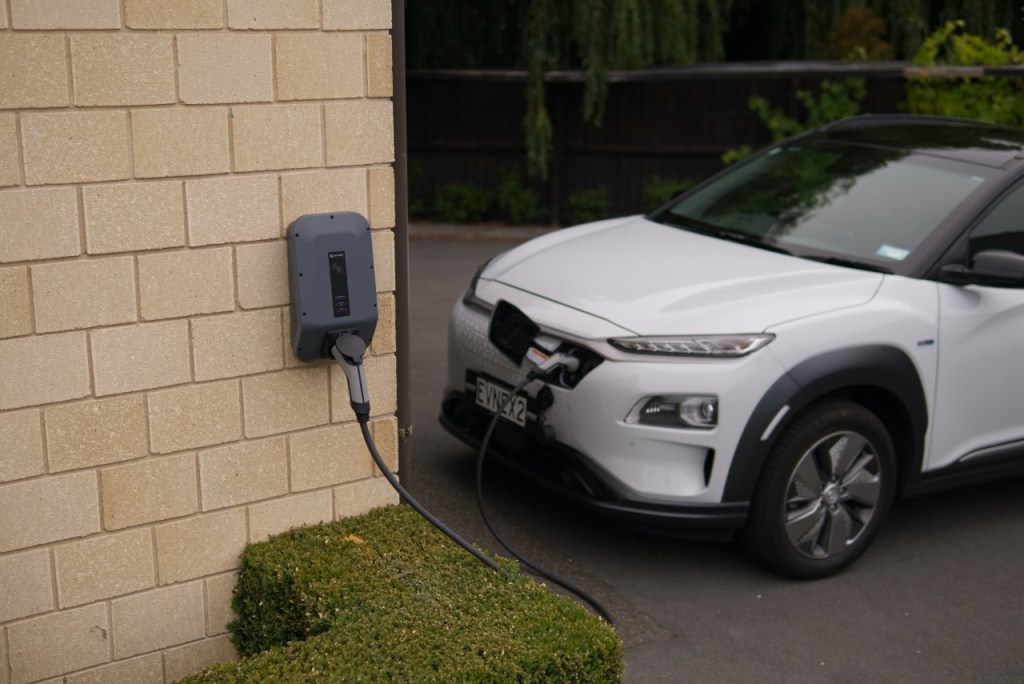When people compare electric and gas-powered vehicles, they often turn to price first. Many people assume there’s a big difference in fuel and maintenance costs, but this isn’t necessarily true. In fact, Energy Sage conducted a price comparison survey and revealed a small difference of a few hundred dollars. In the rare case, a manufacturer hasn’t hit its production quota for tax breaks, you might save $7,500 (but big names like Tesla have already hit this mark).
Gas-Powered Vehicle |
Function |
EV |
| Tank | Energy storage | Battery |
| Pump | Energy replacement | Charger |
| Engine | Mobilizes vehicle | Electric Motor |
| Carburetor | Acceleration and speed | Controller |
| Alternator | Powers accessories | DC/DC Converter |
| – | Powers AC motor | DC/AC Converter |
| Smog Controls | Lowers emissions | – |
The adapted table above shows the comparable functions in EVs vs. gas-powered vehicles. You’ll find there are many similar components, each of which comes with its maintenance costs and routines.
Even with that, you save on fuel costs in the near future, but you’ll end up paying out in regular vehicle upkeep. The most significant deciding factor should not be cost, but performance. Read on to discover what makes EVs tick and how they compare in speed. You’ll know soon enough which vehicle type is genuinely faster.
Initial acceleration
The zero to 60 mph you hear about for race cars and high-end sports cars applies to regular vehicles, too. How quickly a vehicle starts and builds up speed is based on many factors. With EVs and gas cars, this varies drastically based on ignition sequences.
Electric motors don’t ignite like gasoline engines. Because of this, they’re quick to start and exceed gas engines in the “zero to 60” category. Gasoline engines must first route through the transmission, resulting in drivetrain loss. The time needed for this exchange delays ignition and initial acceleration, making EV motors faster.
Streamlined torque and power
If you’re wondering what else makes cars move so fast, it’s not just the zero to 60 mph initial acceleration either. Horsepower plays a large part in a vehicle’s overall speed. A few things that make up horsepower include:
- Torque: measurement of the force that can cause an object to rotate about an axis, such as a wheel on an axle
- Revolutions per minute: a measure of how fast any machine is operating using crankshaft rotations
- Speed: a measure of how fast the vehicle is in motion at a given moment
Horsepower in electric vehicles
For electric vehicles, there’s a little more math involved when calculating horsepower. Due to its simplified acceleration, you multiply the speed by torque by RPM. A quick Google or peek at your vehicle’s owner manual can give you this information, too.
EVs have simplified torque and instant power, which results in quicker initial acceleration. Their inherent efficiency increases speed and overall agility, resulting in speed without prolonged power. Unlike gas-powered vehicles, EVs get you from point A to B without the same sustained performance.
Horsepower in gas vehicles
If you want to race a Tesla against a Ferrari, Porsche, or Lamborghini, consider otherwise. The initial acceleration will put you ahead without the staying power. EV horsepower falls short compared to gas vehicles. Where electric cars have the get-up-and-go factor, gas cars can outlast.
Their performance power lies in their ability to maintain high speeds and acceleration for a more extended time period. The higher RPM and speed provided via a transmission give gas-powered vehicles the necessary power to pull ahead.

Transmissions make the difference
When it comes to EVs vs. gas-powered vehicles, the most significant difference lies in the transmission. Aside from the nonexistent transmission in EVs, there’s the notable speed difference without one. On the flip side, the consequence of no transmission is less horsepower. With less horsepower, your speed drops in sustainability and power.
As demand for EVs increases, electric vehicle manufacturers will need to adapt. Considering the innovative and adaptive nature of EVs, it’s more than likely that these manufacturers will create a solution. In fact, Tesla’s upcoming electric SUV, alongside the Nissan Ariya EV crossover, proves their recognition of invention’s necessity. These companies are both attempting to solve this “problem” in their own way.
If an electric transmission is developed, likely by Tesla — as Elon Musk has a constant drive for innovation — electric vehicles may soon beat out gas-powered vehicles entirely.
Faster isn’t always better — yet
EV horsepower may be less than gas-powered vehicles, but as the electric vehicle industry continues to grow, this is less and less set in stone. With the global shift toward alternative fuel, both in consumer and manufacturer’s interest, innovation continues.
Electric motors allow for better integration with smart tech and driver-assist features. As consumer demand for convenience and connectivity rises, so will the demand for motors that accommodate these wants.


